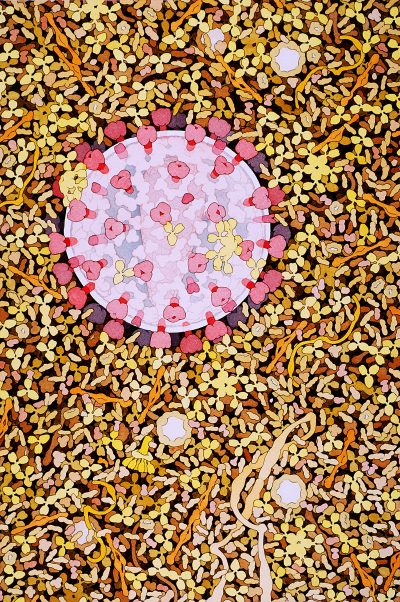Kinetochore
Influenza Virus
Bacteriophage T4 Infection
HIV-Infected Cell
Caulobacter Polar Microdomain
HIV Vaccine
Insulin Release
JCVI-syn3A Minimal Cell
Casein Micelle and Fat Globule in Milk
Escherichia coli Bacterium
Cellulose Synthase
Myoglobin in a Whale Muscle Cell
Collagen and Extracellular Matrix
CytoSkeleton
Transfer RNA and Gag Protein
RecA and DNA
Model of a Mycoplasma Cell
Phage-based COVID-19 Vaccine
SARS-CoV-2 and Neutralizing Antibodies
Red Blood Cell Cytoskeleton
SARS-CoV-2 mRNA Vaccine
SARS-CoV-2 Fusion
Respiratory Droplet
Coronavirus Life Cycle
Myelin
Immunological Synapse
Coronavirus
Influenza Vaccine
Poliovirus Neutralization
Lipid Droplets
Measles Virus Proteins
Last Universal Common Ancestor
Abiogenesis
Excitatory and Inhibitory Synapses
Insulin Action
Zika Virus
Ebola Virus
Chloroplast
Autophagy
Mycoplasma mycoides
Vascular Endothelial Growth Factor (VegF) Signaling
Biosites: Cytoplasm
Biosites: Basement Membrane
Biosites: Red Blood Cell
Biosites: Blood Plasma
Biosites: Muscle
Biosites: Nucleus
Blood
HIV in Blood Plasma
Escherichia coli
Molecular Landscapes by David S. Goodsell
HIV in Blood Plasma, 1999
Acknowledgement: Illustration by David S. Goodsell, The Scripps Research Institute. doi: 10.2210/rcsb_pdb/goodsell-gallery-002
This illustration shows HIV (the large spherical object in red) under attack by the immune system. Small Y-shaped antibodies are binding to its surface.




